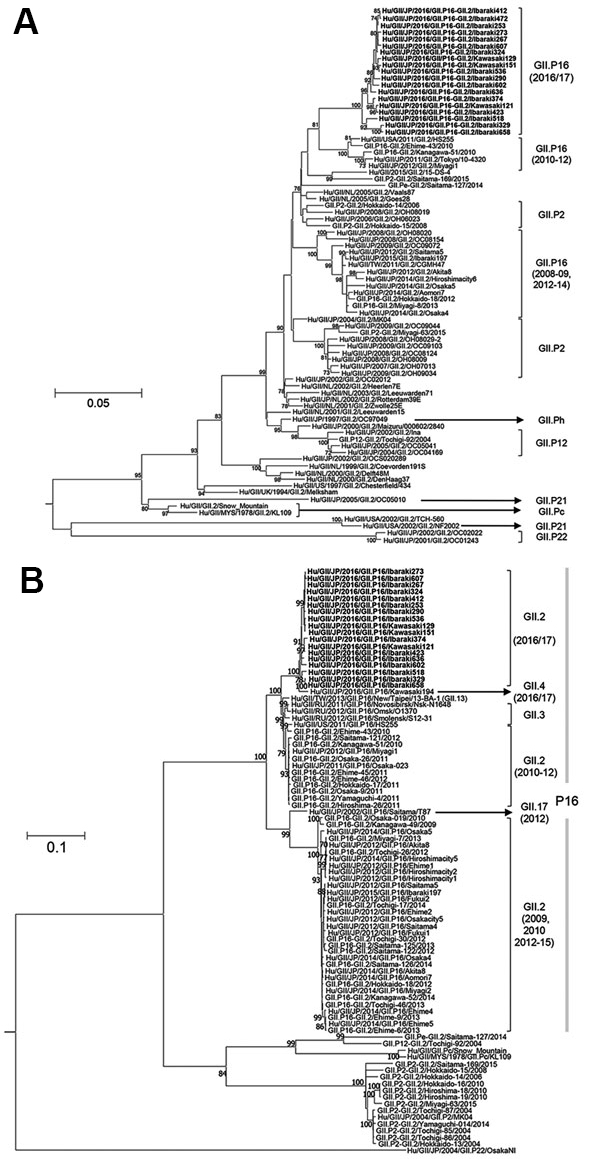Volume 24, Number 1—January 2018
Dispatch
Phylogeny and Immunoreactivity of Norovirus GII.P16-GII.2, Japan, Winter 2016–17
Figure

Figure. Phylogenetic trees for the A) capsid (VP1) gene and B) RNA-dependent RNA polymerase (RdRp) region in human norovirus GII strains. Trees were constructed by using the maximum-likelihood method. Bold letters denote GII.2v strains. Numbers at branch nodes show bootstrap values with >70% support. Scale bar represents number of nucleotide substitutions per site.
1These authors contributed equally to this article.
Page created: December 19, 2017
Page updated: December 19, 2017
Page reviewed: December 19, 2017
The conclusions, findings, and opinions expressed by authors contributing to this journal do not necessarily reflect the official position of the U.S. Department of Health and Human Services, the Public Health Service, the Centers for Disease Control and Prevention, or the authors' affiliated institutions. Use of trade names is for identification only and does not imply endorsement by any of the groups named above.